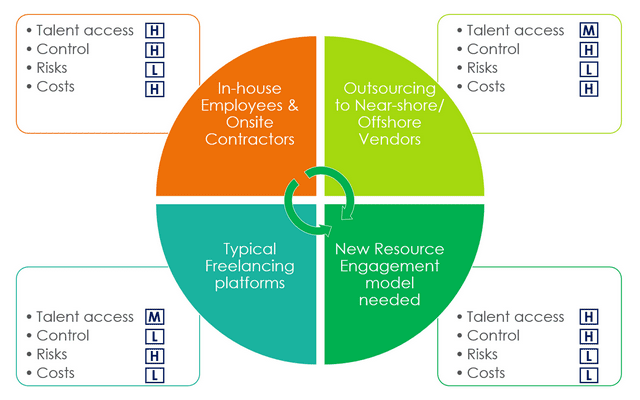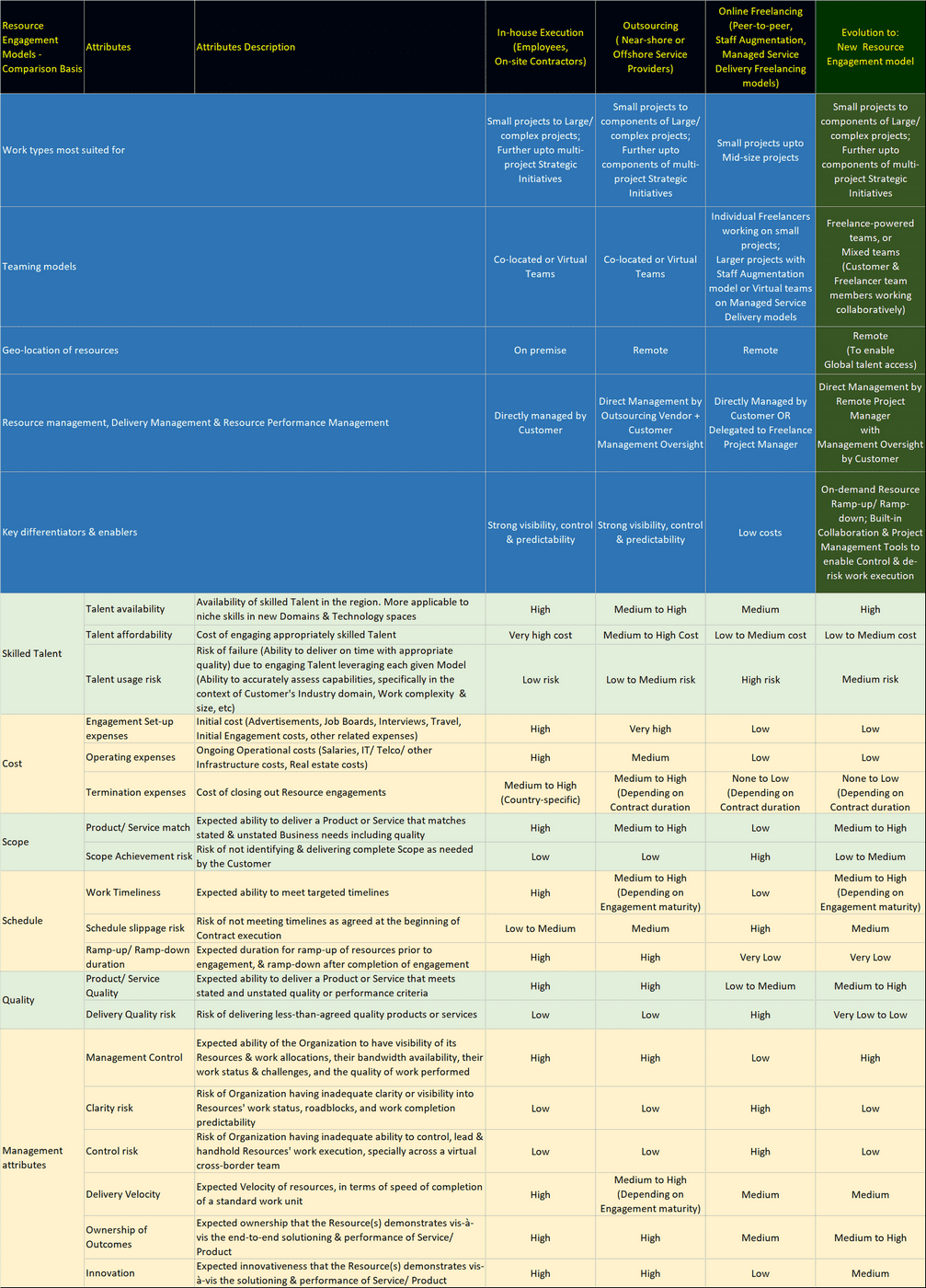Context
Any Business exists by virtue of performing specified activity or activities, which is its Value Proposition. And it exists, by executing these activities leveraging various resources, human or otherwise.
So how does an organization improve its productivity and profitability?
Comparison approach
Obviously, there are a lot of company’s context-specific approaches that can be developed, based on the organization’s industry & domain, products & services categories, operations locations, & related legal/ financial/ political/ societal/ cultural context, etc.
However, at a high level these approaches can be broadly categorized into:
– Automation (replacing humans with systems, either completely or partially)
– Business process improvements
– Changing the Business delivery model and/ or Pricing model
– Relocation to more cost-effective geographies
– Resource engagement model improvements, viz, improvements in Employee/ Contingent staff engagement, etc.
In this article, I’m focusing on the last category, viz, Resource engagement model improvements.
Comparison of Resource Engagement models
So what are the typical resource engagement models in existence today? At a high level, they are:
– On-premise resourcing by hiring new Employees or local Contractors,
– Outsourcing to Near-shore or Offshore/ Remote Service Providers, or
– Freelancing using local or remote Freelancers.

The objective of this article is to compare the 3 Resource Engagement models identified above, and then to propose a new model that offers significant improvements over the existing Resource Engagement models.
A detailed comparison of the various Resource Engagement models is shared below:

Conclusion
By blending various principles and methods from Freelancing, Project Management, Project Portfolio Management, Crowdsourcing, and Collaboration, a model can be developed that is a significant evolution of the existing Freelancing models, while also improving on existing Outsourcing models, to drive up efficiencies in resource availability, control, and work execution, while also improving cost takeouts for organizations.
The next post in this series is coming soon: A comparison of standard Freelancing Models.



